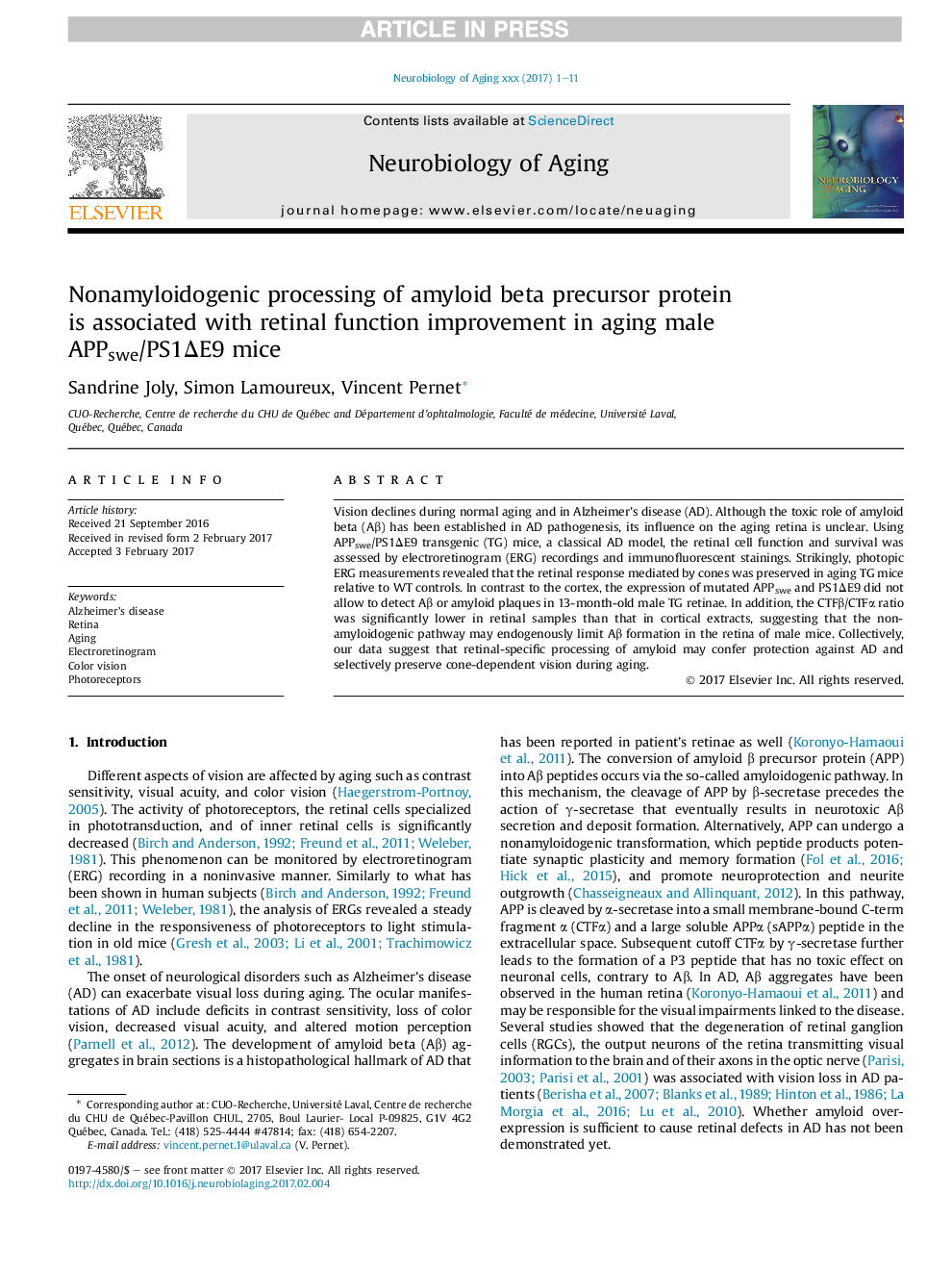| Article ID | Journal | Published Year | Pages | File Type |
|---|---|---|---|---|
| 4932620 | Neurobiology of Aging | 2017 | 11 Pages |
Abstract
Vision declines during normal aging and in Alzheimer's disease (AD). Although the toxic role of amyloid beta (Aβ) has been established in AD pathogenesis, its influence on the aging retina is unclear. Using APPswe/PS1ÎE9 transgenic (TG) mice, a classical AD model, the retinal cell function and survival was assessed by electroretinogram (ERG) recordings and immunofluorescent stainings. Strikingly, photopic ERG measurements revealed that the retinal response mediated by cones was preserved in aging TG mice relative to WT controls. In contrast to the cortex, the expression of mutated APPswe and PS1ÎE9 did not allow to detect Aβ or amyloid plaques in 13-month-old male TG retinae. In addition, the CTFβ/CTFα ratio was significantly lower in retinal samples than that in cortical extracts, suggesting that the nonamyloidogenic pathway may endogenously limit Aβ formation in the retina of male mice. Collectively, our data suggest that retinal-specific processing of amyloid may confer protection against AD and selectively preserve cone-dependent vision during aging.
Related Topics
Life Sciences
Biochemistry, Genetics and Molecular Biology
Ageing
Authors
Sandrine Joly, Simon Lamoureux, Vincent Pernet,
